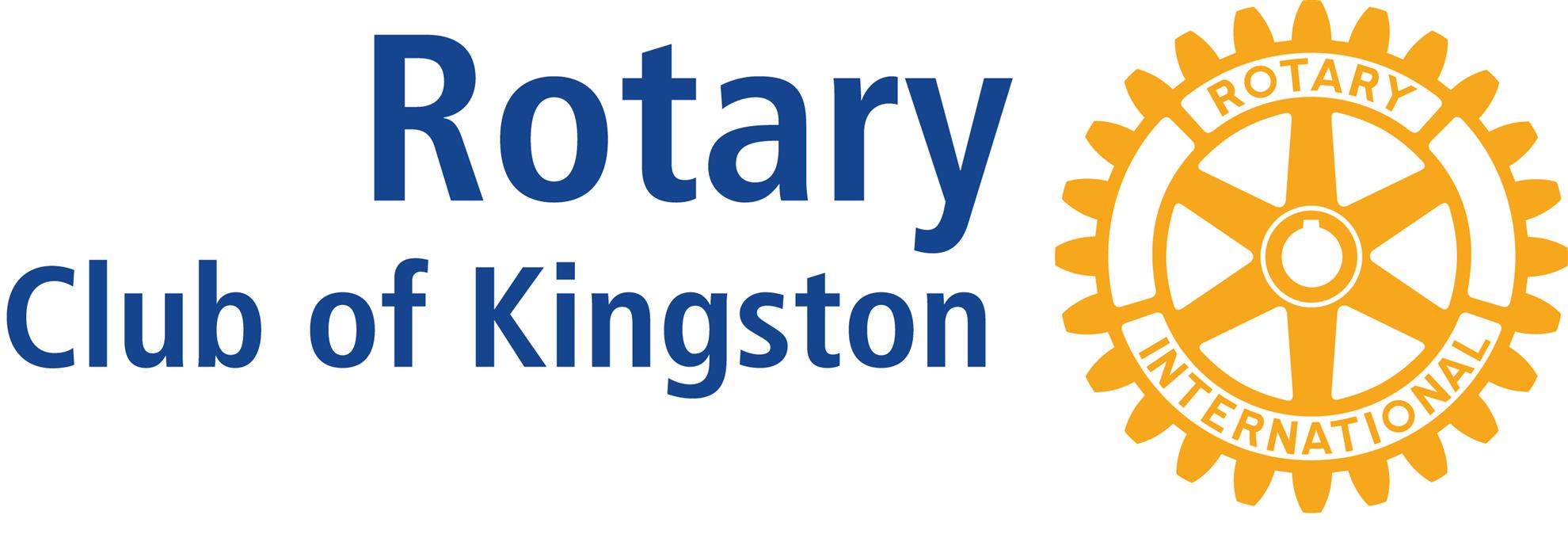
This spring The Rotary Club of Kingston took on the challenge of planting and maintaining the Robinson Community Garden. (See To grow food for people in need Kingston Rotarians enjoy planting Robinson’s community garden)
The harvest is now underway, so I thought it time to bring an update to the year’s growing pains both for us as gardeners and the state of the produce.
The gardening team of Sam MacLeod, Mike Wilson, Elsabe Falkson, Allan Dunlop, Matt Hawksley with assistance from John Borst, Darlene Clement, Ingrid from Lionhearts and our patron Bernie Robinson have put in a lot of hours and learned a lot in the process. From time-to-time groups of young people, such as a 4 H group from Belleville also helped.
Overview of the entire garden
The are three different areas to the greater garden.
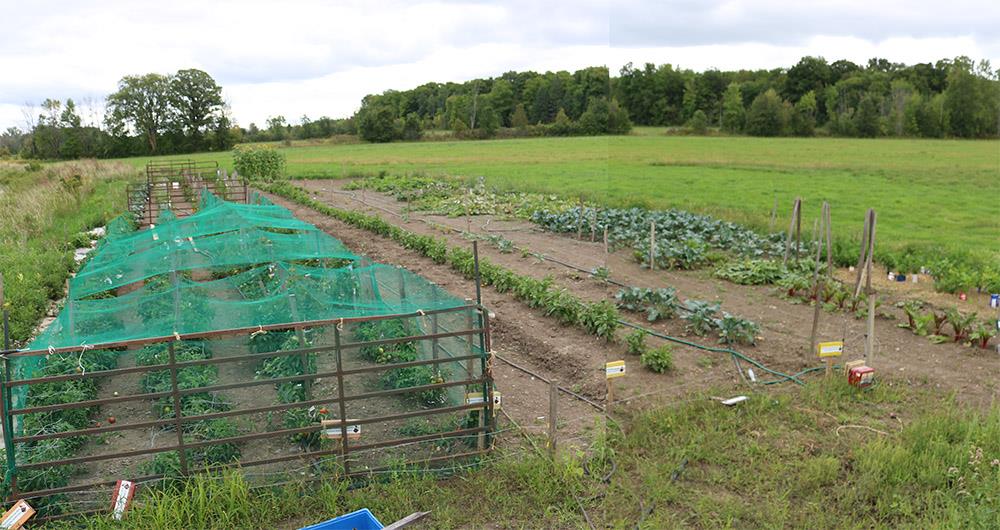
The area looked after by The Rotary Club of Kingston is the largest and features tomatoes, cabbage, onions, peppers, beans, carrots, melons, squash, broccoli, cucumbers, chard, and celery.
A closer view of the Club's garden
 Carrots |  Squash | 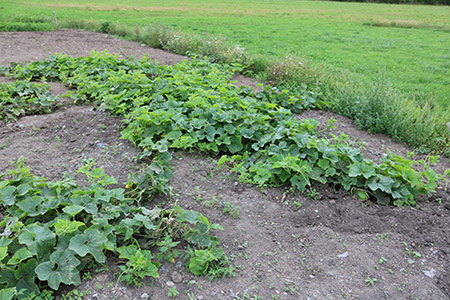 Melons |
 Onions, peppers & beans |  Yellow beans | 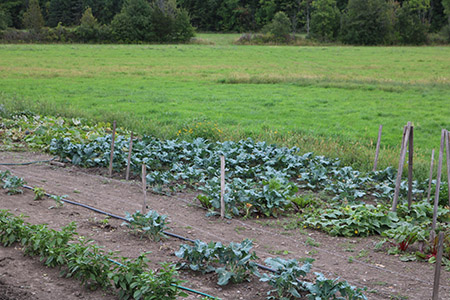 Broccoli 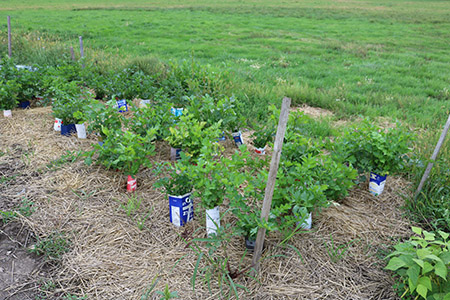 Celery |
Nearly as large is an area looked after by Rotarian Darlene Clement, friends, and Bernie’s staff workers. This year it housed the potatoes, plus beans, more tomatoes, onions, cucumbers, and beets, among other vegetables.

A third area between the two was composed of a number of planted boxes mainly the responsibility of Darlene.
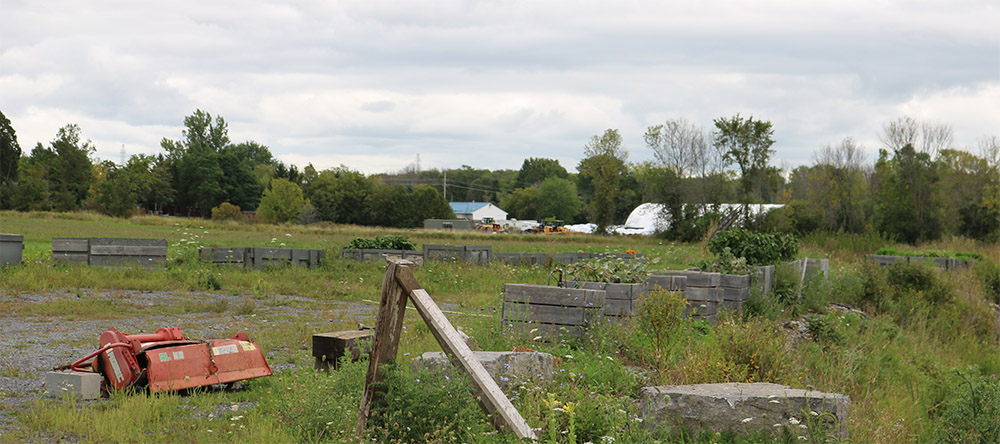
Photos of some of the harvest done between September 13th and 15th.
As planned, Easter Seal families are our priority for the distribution of the produce. This is facilitated by the Easter Seal's manager Linda Clouthier who is also a member of the club. Linda, however, has not been able to distribute all the produce so a considerable amount has also gone to Martha’s Table and Lionhearts for their use.

For example, September 14ths harvest of tomatoes was shared; 2 boxes went for Easter Seals, 2 went for Martha’s Table and 1, the pail, to Lionhearts.
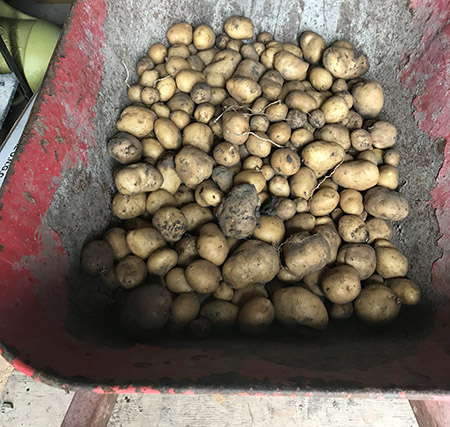 some potatoes | 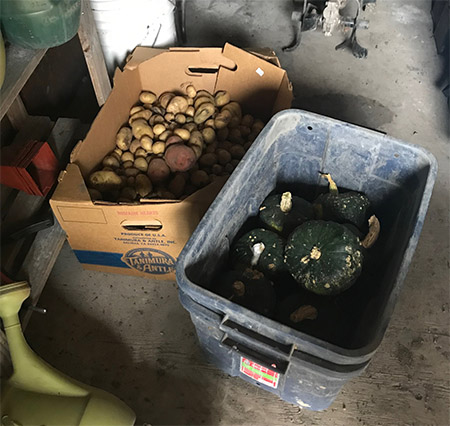 squash |
Most of the potatoes have already been harvested and are now in the cold storage facility. This followed a serious potato beetle infestation.
Harvest on September 20 2022 update
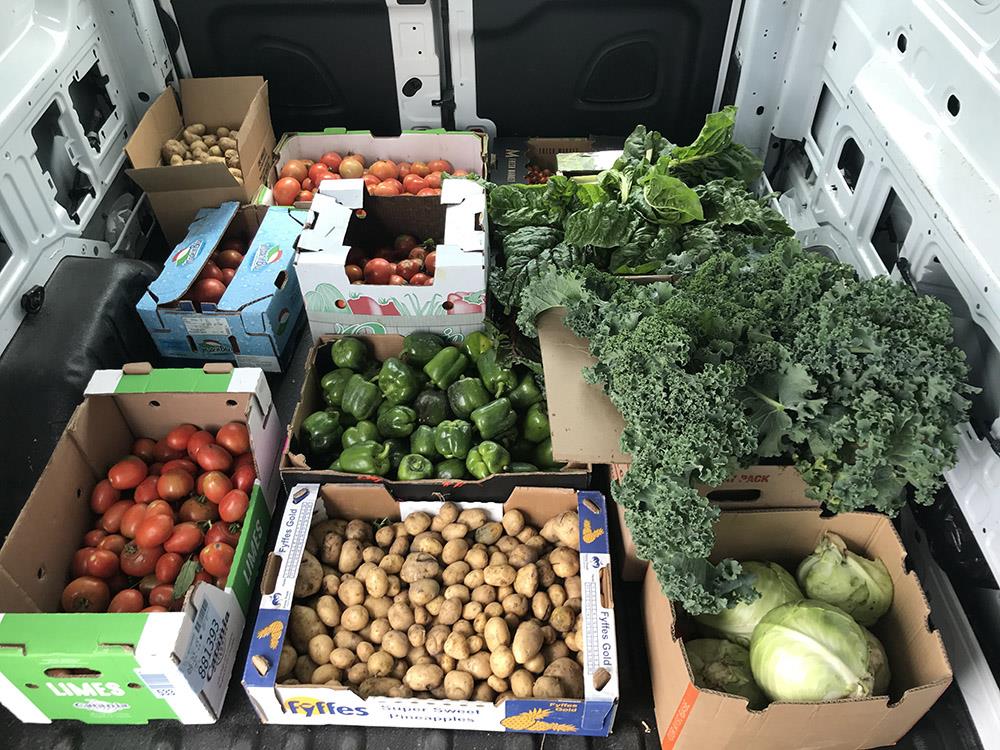
This is about half of what was picked by Elsabe and includes tomatoes, potatoes, peppers, cabbage, kale, swiss chard, is on the Lionhearts van to be delivered to fhe food distribution warehouse.
Harvest of tomatoes September 23, 2022 update

The evening of Sep 23rd predicted a low of 5 degrees C, and because the garden is in a hollow and we were afraid of frost, so we picked all of the tomatoes showing some colour as a precaution. We did not get frost so we remaining fruit should also ripen.
Harvest of October 03, 2022
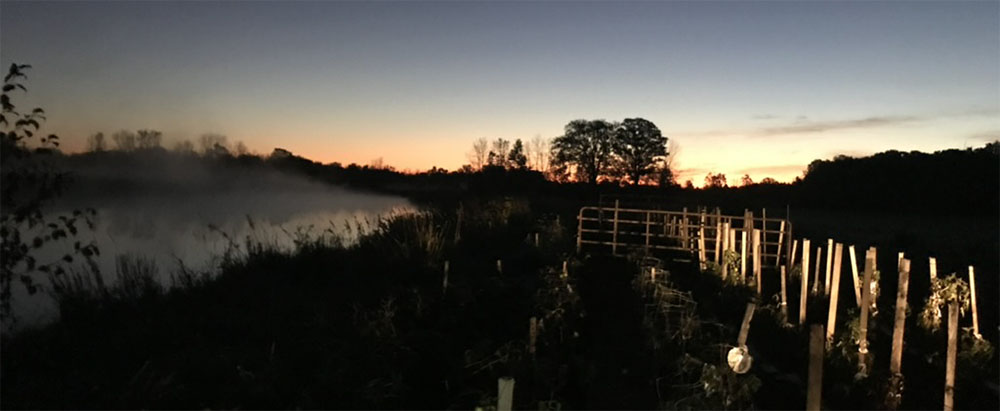
 On the morning of Oct 3rd, dawn broke around 6:30 and we had been out picking every tomato possible since 4:00 am. That's because Kingston's temperate had fallen to 2 degrees C and we knew that frost would be present in the valley. Although frost covered the tomatoes, if they were picked and prevented from being hit by the sun they should be okay. There were about 3 times as many green tomatoes as those with some colour. However, green tomatoes can be fried, or made into salsa or relish.
On the morning of Oct 3rd, dawn broke around 6:30 and we had been out picking every tomato possible since 4:00 am. That's because Kingston's temperate had fallen to 2 degrees C and we knew that frost would be present in the valley. Although frost covered the tomatoes, if they were picked and prevented from being hit by the sun they should be okay. There were about 3 times as many green tomatoes as those with some colour. However, green tomatoes can be fried, or made into salsa or relish. A thank you goes out to Ingrid from Lionhearts, for picking up the produce at 6:30 and working until 8:00 am to pick the last of the tomatoes.
We also dug up the celery. The leaves were hit but the stalks were in tubes plus surrounded by straw so should be okay too.
on the weekend the broccoli and last of the sweet peppers were harvested.
Some Challenges
Some of the challenges we faced were potato bugs in the early days of the tomatoes followed by large green caterpillars as they matured. Insecticidal soap was used on the beetles. The caterpillars were picked off by hand.
The onions in the Rotary Garden didn’t grow very well, perhaps from too much watering. Dar, however, was very successful with nice large firm bulbs.
The Canada geese ubiquitous in the area ate all the beets when they were about 1 inch high and then nibbled at the first sign of green tomatoes. Some saw the crows eating at the early tomatoes, too. Two steps were taken to save the tomatoes: an electrified fence was installed around much of the garden and fish netting was strung up using two different methods over a portion, the costs of which were borne by our host Bernie.
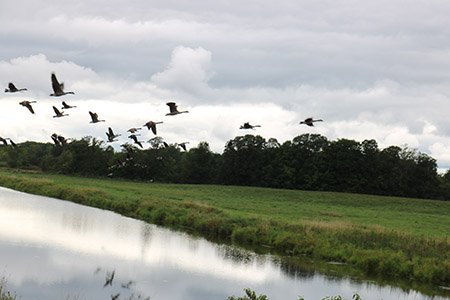 Geese in area |  Fish net attached to boards and drapped over row In the backgroung a net was strung over all rows at the 4 foot level and staked to the ground. |  Electrified fence |
| ||
 by geese |  by caterpillar | |
Bernie also donated the fencing out of which the cages for the determinate tomato varieties were contained and the stakes for the indeterminate varieties.
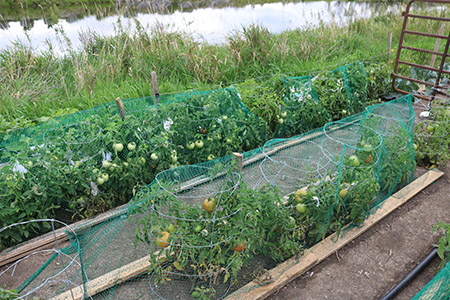
Cages made of fencing
As the tomato harvest began the leaves of some of the different varieties caught a virus which eventually killed the leaves. These were cut off as they progressed to slows its spread.
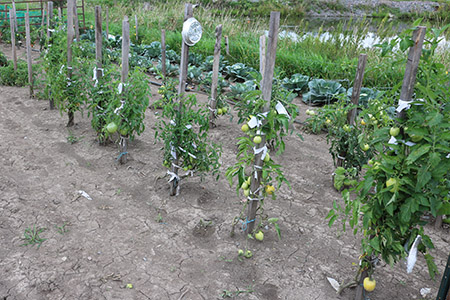 Diseased leaves stipped - advantage opens bottom tomatoes to the sun | 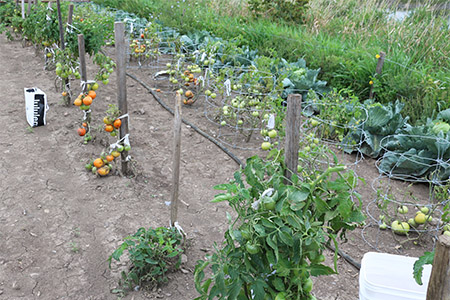 Serious loss of leaves due to disease but tomatoes will ripen |
The future
Although we faced several nature inspired problems, we also need to review some of our human issues.

Keeping a record of the work done and sharing it, was somewhat haphazard and improved over time.
Some produce did not germinate well, and this will have to be improved upon.
We also need more hands-on-deck when big problems like infestations and the unexpected arise. To this end we are planning a meeting to review our year and organize now for the 2023 growing season.
If you liked this news story do not forget to click on the "like" button and to share it on your social media page/pages. It is one way to show what our club does.for the community.
